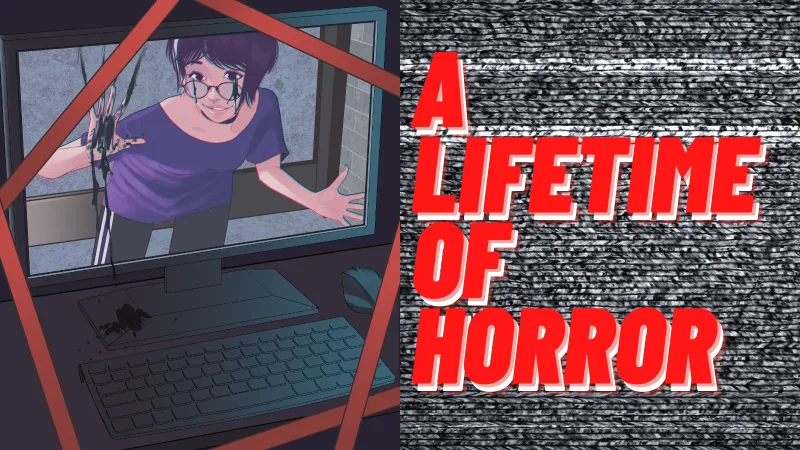
Ikumi Nakamura's mother didn't want her to work for Capcom. As she tells it, early in life, Nakamura saw a feature on the making of Resident Evil. In it, the game's creators gather at a bar to drink and talk about the development. Nakamura's mind was made up. She wanted to be a game developer. She wanted to work with the people she saw on screen. Nakamura's mom was less impressed.
"I saw it, and I told my Mom, 'Oh my God, I want to work with them,'" Nakamura tells Game Informer via translator. "And my Mom's like, 'No, don't work with them. They're just drunk, old men. Don't do that!'"
Nakamura didn't take her mother's warning to heart.
Nakamura's first job in the industry was at Capcom; she was an artist for its internal team, Clover Studios. That job meant a lot to her, personally. Aside from being a fan, Capcom's games were something Nakamura bonded over with her father, which offered a personal connection to the work.
During and since, Nakamura's had a hand in developing several cult-favorite video games, including Ōkami, Bayonetta, and The Evil Within series, working for Platinum Games and Tango Gameworks after Capcom. But for the majority of her career, she was relatively unknown within, and certainly outside, the game industry. That is until E3 2019, when her presentation for Ghostwire: Tokyo thrust her into video game stardom – thanks in no small part to her outgoing and offbeat personality. Nakamura has since become a social media favorite, befriending prominent game developers such as Sony Santa Monica's Cory Barlog.
Nakamura is, more or less, an overnight sensation, and since leaving Tango and Ghostwire in September 2019, people have wondered what her newly founded studio is developing. Despite that, much of her story remains unknown – where she came from, her career at Capcom and Platinum, and her experiences at Tango. To remedy this, we reached out to Nakamura, and talked to her for hours – in one of her first big American interviews post-Tango – about everything from her love of horror to her once-daily nightmares while working on Ghostwire, to what she plans to do next.
Capcom
Growing up, Nakamura's father kept one secret from her mother: He was bonding with their daughter over a shared love of horror movies and video games.
Nakamura's father raised her the same way he would've raised a boy, and the two were both daredevils in their own ways. Where her father rode motorcycles, Nakamura climbed on the roof of her family's house and jumped off their staircases. Which, to be fair, is a dangerous activity for a little kid, as evidenced by one of Nakamura's childhood injuries.
"One day, I fell from the stairs and lost the lower part of my face," Nakamura says, laughing, explaining she hit the ground face first. "The skin and the lower lip got dragged. It was almost like I lost my lower lip. My Mom saw it and she passed out from the shock, so no one could help me out at that time."
Horror media made the biggest impact on Nakamura as a child. Nakamura and her father hid this from her mom, who didn't approve, and they spent a lot of time watching scary movies and playing horror and gothic-inspired games together.

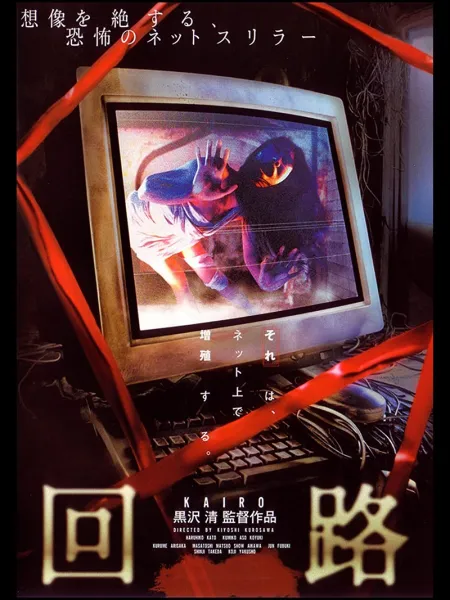
It can't be overstated how profound an influence horror had on Nakamura; it's something she constantly brings up when talking about her early life. Growing up, she says she watched horror movies every day, such as American classics like Return of the Living Dead. She also loved staples of Japan's horror boom from the mid-to-late '90s and 2000s, such as Pulse (Kairo in Japan), directed by Kiyoshi Kurosawa.
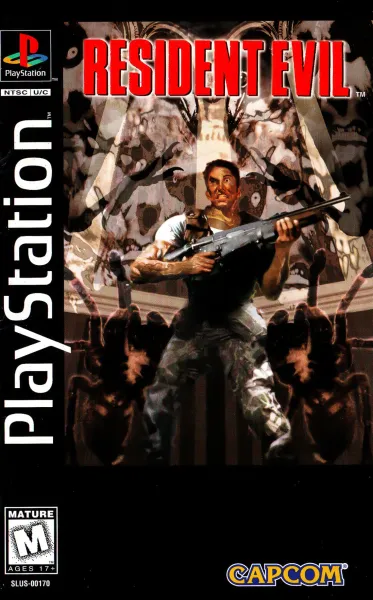
At the same time, as she puts it, Japan was in a "golden age" of video game development, and Capcom was just one of many companies spearheading that charge. Nakamura spent a lot of time playing games in the Resident Evil and Devil May Cry series – which, coincidentally, have been directed in the past by Shinji Mikami and Hideki Kamiya, who Nakamura would spend most of her career working alongside.
Nakamura went to art school in Tokyo and later the Amusement Media Academy to study game design. However, only a couple years into her education, her life was turned on its head. While out on his motorcycle, her father was in an accident and passed away suddenly, sending her life into "total chaos." She spent a lot of her early life acting reckless, but Nakamura says her father's death changed her, leaving her focused on protecting her family.
"After his death, I totally changed," she says.
But one thing didn't change: Nakamura's dream of working at Capcom. If anything, her father's death reinforced her desire to join the company after her schooling. He loved Capcom's games, and during his funeral Nakamura made sure he was still able to play Resident Evil.
"In his coffin, I put a copy of the Resident Evil strategy book and a PlayStation controller," she says. "[So] that he could play the game in another dimension. But I forgot that Japan is a cremation culture, so his bones and the controller got stuck together. I looked at it [as] he never gave up the game, even when he was a bone! I was impressed."
Nakamura had to apply twice, but she joined Capcom in 2004, coming on board its internal Clover Studio. Initially set up to develop Viewtiful Joe 2, Clover was a semi-autonomous studio within Capcom's Osaka, Japan headquarters, tasked with developing new intellectual properties. In line with Nakamura's influences, Mikami and Kamiya worked as directors for the studio – the former overseeing 2006's God Hand and the latter helping make Viewtiful Joe 2 and Ōkami, released in 2004 and 2006, respectively.
Nakamura's first project was Ōkami. She joined Clover as a 3D environment artist – a job, she says, she was "incompetent" at. Despite her lack of experience, and the fact that some people within the company weren't treating her well, Nakamura applied herself and tried to learn as much as possible on the project.
"I was new, I didn't know really how to work, and was constantly told that I would be fired," she says. "I was pushed around, overloaded with tasks and challenges. And so I went around to different sections, to ask about 'how to work better' and what I can help with, helping with anything I could, making animations or small stages, or objects."
At the time, Nakamura describes Capcom as an "old-school" developer, full of behavior that wouldn't fly in a modern workplace. For example, it wasn't uncommon to see developers sleeping under their desks to save themselves a commute – something presented to the public on television in both Japan and the United States. When she was a kid, Nakamura says that when she saw that footage it seemed like a dream job. Now that she's older, not so much. "[I felt like], 'Oh my God, that's what I wanna do,'" she recalls. "But then looking back, like, no, that is totally wrong."
It also wasn't uncommon for Capcom management to let their tempers get the best of them, lashing out and yelling at employees or hitting desks and kicking trash cans. "They would just kind of hit everything around them," Nakamura says, adding that it showed her the kind of company culture she doesn't want to create in the future, for which she's thankful.
"Overall, it wasn't effective," she says. "People do get frustrated, that happens, but showing that physically or verbally, that creates fear in the work environment."
"Now I know what not to do," Nakamura says.
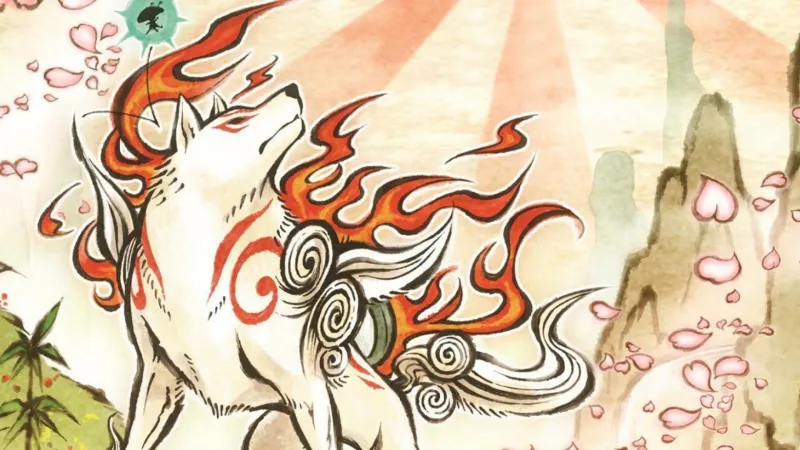 Ōkami
Ōkami The relationship between Capcom and Clover was an acrimonious one, with constant clashes between management and Kamiya over Ōkami's direction. According to Nakamura, her impression was that Capcom saw Clover as "just the group of weirdos" and a "totally separate entity." As an example, she points to the Wii port of Ōkami, developed by Ready At Dawn, which didn't include the names of the original developers or the Clover logo in the credits.
In 2008, Capcom issued a statement about the missing credits, saying the removal was due to a pre-rendered cutscene containing the Clover logo, which the publisher did not have the legal right to use in a game the studio wasn't directly involved in. "We also didn't have the source to the credit movie itself, so we couldn't just use it and remove the Clover logo," Capcom said.
"I'm sure something happened – politics," Nakamura says. "But it's not a cool thing to do for the developers who actually spent hours and effort to create the game."
Despite the issues, Nakamura isn't wholly negatively about her time with Capcom. In fact, since Ōkami's development wrapped, she's been open about her desire to make sequels that deliver on the original vision of the first game. As she puts it, the game Capcom released was "probably one-third" of what Kamiya initially had in mind. And now that Nakamura has worked for other developers – specifically ones partnered with publishers based in the States – she admits to wondering whether or not she should've stayed at Capcom.
"What would've happened?" Nakamura muses. "Because, out of all the companies I worked with, Capcom is a company that allowed artists to input their artistic sense in the game the most."
When we point out we expected the opposite answer, that Capcom was the most restrictive, Nakamura adds, "Maybe that's what Japanese people who stayed in Japan [and] didn't deal with other companies overseas, they might say that."
Of course, Nakamura didn't stay. When numerous people left Capcom and Clover to found their own studio, Nakamura went with them, starting her journey at Platinum Games.
Platinum Games
In retrospect, Nakamura says it's probably for the best that her first project as director didn't get made.
Early into her time at Platinum, Nakamura submitted a proposal for a Nintendo DS game that caught the eye of Mikami, who came over to Platinum as a contract director and external board member. The project, as Nakamura tells it, was to be several small "eerie" games touching on "taboo subjects." The project was greenlit, and despite her lack of experience, Nakamura got to lead her own team. It didn't go well, and the game's subject matter ended up being a point of contention.
"I even went to Nintendo to give a presentation, and they told me if Platinum Games released this through the DS, not that it will be the end of Platinum Games, but Platinum Games will have a really, really bad reputation," Nakamura says.

 Bayonetta concept art by Ikumi Nakamura
Bayonetta concept art by Ikumi Nakamura About one year into development, Nakamura's project was canceled and she was moved to the team making the first Bayonetta, a stylish action game in-line with director Kamiya's earlier work on Devil May Cry. She was a concept artist – even if it was a partially self-appointed title. "I wanted to graduate from being an environmental artist, so I took the liberty of calling myself a concept artist and started drawing designs," Nakamura says. "I think I acted strongly [and felt] that I should do what I wanted to do even if it was in an organization."
At the time, Nakamura was playing a lot of games developed by American studios – especially Uncharted, Gears of War, and Dead Space. This influenced her approach to game design, specifically when it came to Bayonetta's user interface. Based on the game's female focus, she also brought in influences from famous women throughout history, fashioning Bayonetta's accessories after women such as Cleopatra. To accentuate the over-the-top aspects, Nakamura suggested making buildings gigantic and the action outlandish – all aspects that made Bayonetta stand out when it was released in 2009.
At the same time, Nakamura began thinking about how to develop games that appealed to a global audience, not just a Japanese one. Her hope was to show players in other countries how cool Asian cities and culture were – though her specific vision wouldn't be heavily applied until later games.
Following Bayonetta, Nakamura served as art director on Platinum's now-canceled Scalebound. While Microsoft signed on to publish, it still never saw the light of day. Nakamura says her time with its troubled development left her with lasting lessons for future projects.
"What I still think about is, 'Was I [successful] in creating what the director wanted to do?'" she reflects. "The concept wasn't fixed; it didn't have a strong vision. What the publisher wanted, what the director, Kamiya-san, wanted, and what the team wanted were all kind of not looking at the same direction. So, it didn't have the unity. It was my job to create the unity, and I don't think I was able to provide that. So that's something I felt like I couldn't do back then. What I learned is the director has to have a very clear, strong vision from the beginning."
By the time Scalebound was canceled, Nakamura had already moved on from Platinum. When Mikami founded his own studio, Tango Gameworks, in 2010, Nakamura was part of the group that joined him, allowing her to move back to her home city, Tokyo. It was not only the job she's held the longest thus far in game development, but the one that thrust her into the spotlight.
Tango Gameworks
Joining Tango gave Nakamura a chance to do something she'd wanted to do her entire life: make a survival horror game. And it would be one directed by Shinji Mikami, the director of the first Resident Evil, no less. But it's complicated.
The Evil Within was Tango's first official release and Mikami's return to survival horror. However, the developer had previously experimented with an open-world science-fiction survival game called Noah. As detailed in a 2014 Polygon interview with Mikami, early in the company's history, Tango hit financial issues. Noah was canceled and Tango was in trouble. Until later in 2010, when publisher Bethesda purchased the company.
"Compared to the image of a typical Western game publisher, Bethesda is probably more like a typical Japanese publisher," Mikami said at the time. "They don't force creative people to do stuff. They give that creative freedom to developers."
Nakamura tells the story a bit differently. "[Mikami] really wanted to create new types of games, not [keep] doing the same things he's done," she says. "But people in the world wanted him to create – expected him to create survival horror."
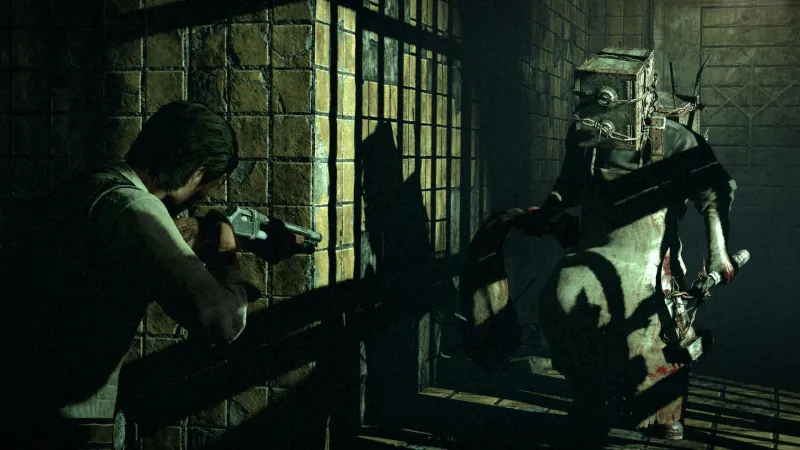 The Evil Within's "Keeper" enemy, designed by Ikumi Nakamura
The Evil Within's "Keeper" enemy, designed by Ikumi Nakamura Nakamura found herself on a project she had dreamed of making with the caveat that, in her mind, the director didn't want to make it. Rope in Western publisher politics – something Nakamura up to that point wasn't familiar with – and it became a complicated project. The Evil Within, released in 2014, was the last project Mikami directed, and the developer has since stepped into a producer role to allow younger developers to direct games. Nakamura was one of those developers.
After some time on The Evil Within 2, released in 2017, Nakamura began leading development on what would become Ghostwire: Tokyo. Her direction was to take a bunch of elements from her love of the occult, supernatural, and urban legends, and combine them into a contemporary setting – which in this case, as the name implies, is Tokyo.
"Remember when we were talking about Bayonetta, that I wanted people from all over the world to think about how cool Asian urban cities are?" she asks. "So, I wanted to bring that back. I was like, 'Finally, I can make a video game that can express my vision that way.'"
As of this writing, Ghostwire remains unreleased, but Nakamura filled us in on some initial ideas. Set in 2020, people throughout the world have started to disappear, leaving those left behind to assume it might be a virus taking people out. To combat this, people begin wearing masks. However, in 2021, amid the COVID-19 crisis, Nakamura says she's glad that iteration of the story isn't being released. However, she still speaks proudly of the general setting, atmosphere, and supernatural direction.
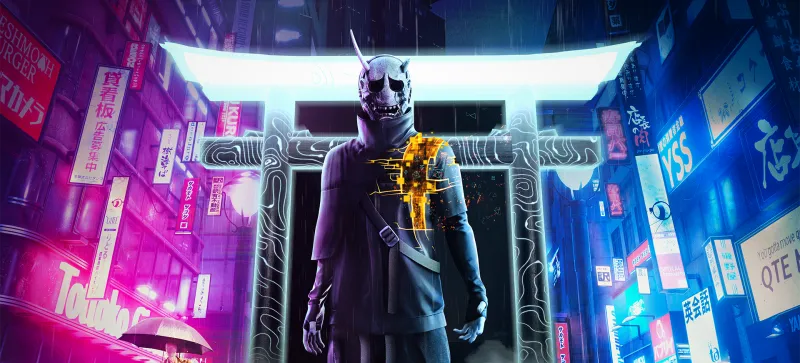 Ghostwire: Tokyo
Ghostwire: Tokyo Nakamura had the chance to present Ghostwire to the world for the first time at E3 2019, where she got on stage during Bethesda's press conference to announce the game. Understandably, the idea of getting on stage in front of thousands of people (not to mention many more watching live) was nerve-wracking. As Nakamura tells it, the numerous rehearsals over three days didn't help. Nakamura isn't a native English speaker, and she says she had trouble with her lines, so she practiced them over and over while pacing around backstage.
However, at the last second, Nakamura says the show's producer told her to forget her pre-rehearsed lines and to go out on stage and be herself.
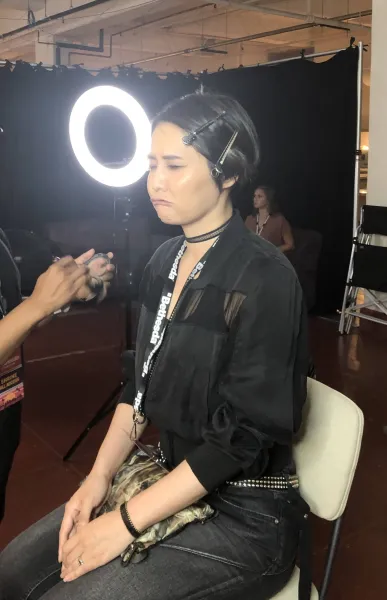
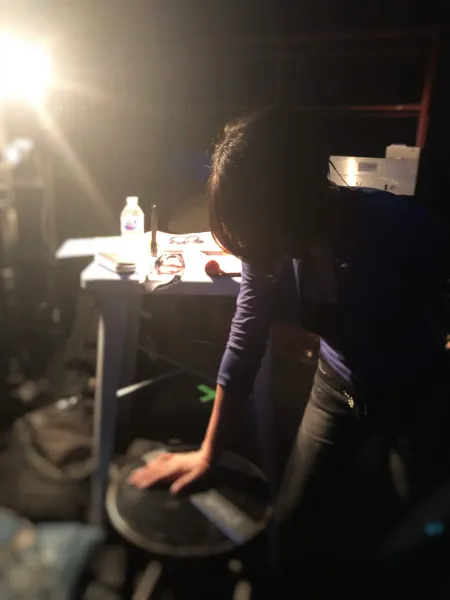
Nakamura's presentation became one of the standout moments of that E3. While debuting Ghostwire, her passion for the project endeared people to her, and her use of humor to explain the game's atmospheric world was a welcome change of pace compared to the numerous self-serious presentations usually filling E3. Overnight, Nakamura became a sensation, a meme, and in her own way, a celebrity.
 Ikumi Nakamura Ikumi Nakamura behind-the-scenes at E3 2019
Ikumi Nakamura Ikumi Nakamura behind-the-scenes at E3 2019 "I was simply happy about all the responses, because I was really passionate about presenting what I was passionate about," Nakamura says. "And also, I'm a big fan of manga and anime, so I love all those memes. [...] And that ended up [leading to] people focusing on game creators. So, I feel that was a success."
But Nakamura's time on Ghostwire was about to end. Eventually, the stress of developer-publisher politics and the publisher having control over the game affected her negatively. Nakamura began having nightmares about higher-ups within the company. This went on for years, she says, starting with just talking in her sleep around once a week, and then progressing to daily nightmares.
"The nightmare I had was that when I came to work, all the members of the development team had disappeared," Nakamura recalls. "Then there was an altar in the middle of the room, and when I looked at the picture, it was of my boss, which was a strange story."
Her health declined around this time as well and four years into development on Ghostwire, Nakamura made the decision to leave both the project and Tango. Getting to that point wasn't easy. Nakamura likens Ghostwire to a child and herself as the mother. Four years is a long time to lead a project, and walking away was a difficult call.
"I was a creative director, so this is literally my baby," she says. "My four-year-old baby. So, to let that go – ask any mother to let her baby go. It was that gut-ripping."
Nakamura became a free agent, but as she tells it, she left without much of a plan. And then something unexpected happened. Once news of her departure hit the internet, she began getting offers from developers worldwide, and she befriended some of the bigger names in film and game development, including Sony Santa Monica's Cory Barlog, film director J.J. Abrams, and Rainbow Six Siege creative director Leroy Athanassoff. Regaining her health, Nakamura even traveled around the world to visit studios, learning from different creators.
But there was one unexpected twist: Around this time, Nakamura became pregnant. It made some studio visits difficult.
"I had never wanted to have children myself," Nakamura says. "Because I thought that my children would be a game. In fact, I became healthy and an alien came into my body. I flew all over the world and visited many studios while being amazed and throwing up from the bad effects of morning sickness. I feel like I have thrown up in every studio. It's a memorial for me. Don't worry, I threw up without making a mess."
In March 2021, Nakamura announced she had designed a new set of skins for Rainbow Six Siege, the product of her new relationship with the developer. More than usual, the news was picked up by mainstream game press outlets, cementing Nakamura's stardom, even when it came down to something as small as skins. Additionally, Nakamura conceptualized and directed her first music video for the Japanese dance group Dazaifu Mahoroba-shu. She also says she's consulted and done design work for other games, but doesn't elaborate on which as they aren't out at the time of this writing.
Click here to watch embedded media Her Own Studio
Nakamura is at a new stage in life, and she's taking advantage of it. On top of her work consulting and designing as a freelancer, she recently announced she's opened her own studio. And while the company will initially be headquartered in Tokyo, Nakamura says she's prioritizing diversity within her workforce, and hopes to open other offices in countries such as the U.S. and China. All her current team members, though working from home, are scattered across the globe, she tells us.
Nakamura has also become a visible female Japanese game developer. While people such as Mikami and Kamiya are known by name and for their work, it's not as common for women to receive similar recognition. Nakamura is in a rare spot to inspire others to make similar impacts on the industry, and it's not an opportunity she plans to waste. She says she plans to put other women developers in the spotlight and highlight individual creators when the time comes.
"There is a female creator who is like a big sister to me, who takes care of me," Nakamura says. "She said to me, 'I want you to sit on the throne someday, because your success will encourage me and many other female developers.' [At the] time, I didn't really understand what she meant by that. But now I know what it means."
"It was purely a coincidence that I was known, I became somewhat famous," she says. "Yes, it was a coincidence, but I'm going to make that into an opportunity and use it to work for me."
This article originally appeared in Issue 338 of Game Informer.
Header image: Kerri Solaris (@kerrifique)